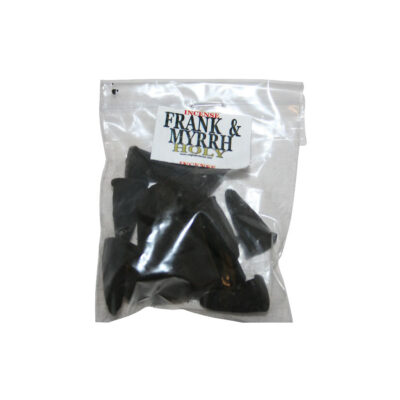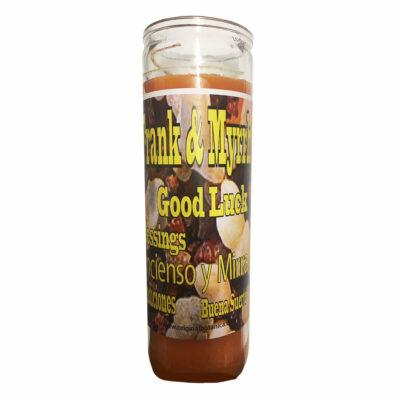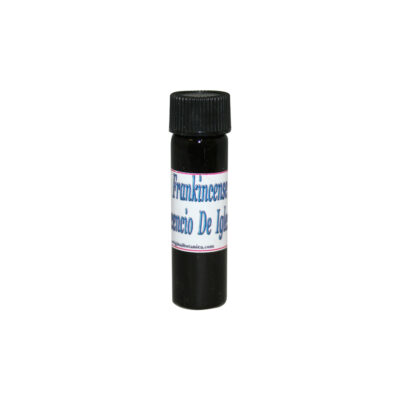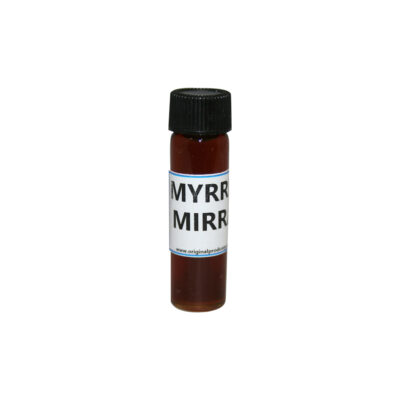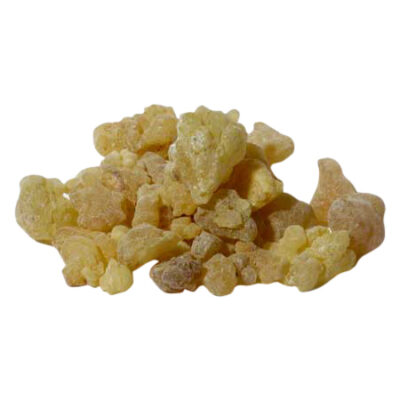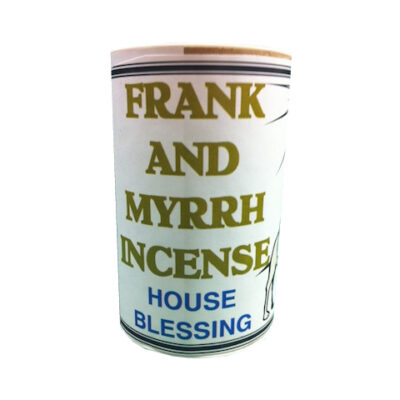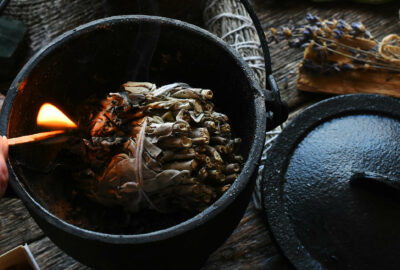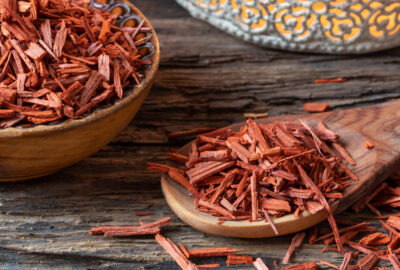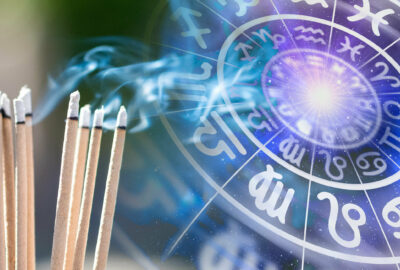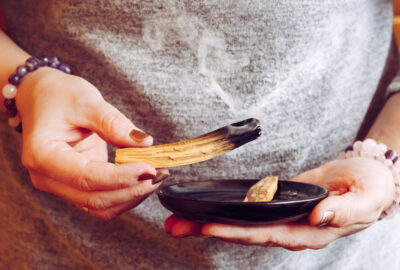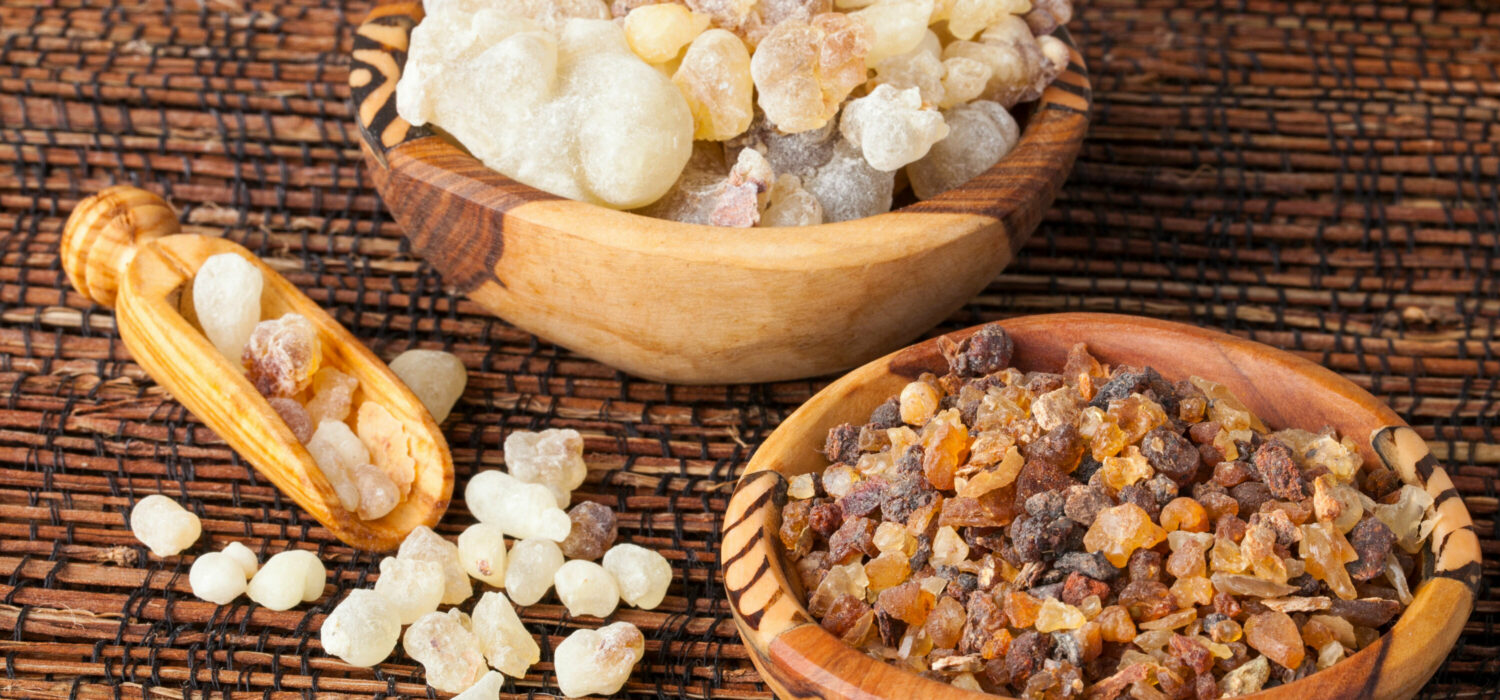
The History of Frankincense and Myrrh
The traditional telling of the story of Christmas includes the three wise men and the gifts they bestowed on the infant Jesus. Scholars believe that gold, frankincense, and myrrh were presented to Mary and Joseph by the Magi for the special spiritual symbolism that they represented of Jesus himself. While only briefly mentioned in the bible, frankincense and myrrh were highly coveted by Egyptians during the period surrounding Jesus' birth.
Both frankincense and myrrh come from the gummy sap that seeps out of the Boswellia and Commiphora trees when their bark is cut. The oozing resin is allowed to harden and then it is scraped off the trunk. It can then be used in its dried form or heated to create essential oils. Both substances are edible and often chewed like gum. They are also exceptionally fragrant, particularly when burned, with myrrh giving off a bitter scent and frankincense producing a sweet, citrus odor.
Traded in the Middle East and North Africa for over 5,000 years, these substances created a booming trade that lasted several hundred years. Frankincense and myrrh were desired for personal, spiritual, and medicinal reasons. Daily bathing was not a common practice at this time, and people would use the sweet-smelling smoke to make themselves smell better. Egyptian women mixed frankincense into their eye shadow to improve its texture.
The ancient Egyptians purchased the resins from the Phoenicians, using them in insect repellent, perfume, incense, and ointment for wounds and sores. Other ailments they were once reported to cure include hemlock poisoning, snakebites, diarrhea, plague, and scurvy. They were also the primary ingredients used in the embalming process.
Widely used in burial, the Egyptians used myrrh and frankincense to prepare animals for sacrifice and human mummies. In Egypt, Greece, and Rome they were burned during the offering ceremonies to the deities and were essential components of the incense burned in the temples of Jerusalem. To this day it is still used in their services. In addition to being offerings to various deities, frankincense, and myrrh were burned in memory of the recently dead.
At the time Jesus is believed to have been born, frankincense and myrrh were worth more than gold. However, as Christianity rose and the Roman Empire fell, the popularity of the substances diminished. The thriving trade routes that had developed over many centuries were now obliterated, greatly reducing people's ability to secure the items. Additionally, in the early years of Christianity, incense was forbidden because of its association with pagan worship.
The Spiritual Properties of Frankincense
Frankincense is a symbol of holiness and righteousness. The gift of frankincense to the Christ child was symbolic of his future priesthood, setting him apart from a typical king. Frankincense was used in temple rituals, and burned ceremonially by the priests. It was not native to that region, however, so obtaining frankincense was difficult to do. This made the gift precious in both meaning and value.
The aroma of frankincense symbolizes prayer rising to the heavens like smoke. Frankincense oil and incense help in visualization, enhancing an individual's insight. It is said to have soothing properties that facilitate concentrating the mind and prevailing overpressure and hopelessness. In the Middle East, people consider frankincense as sacred massage oil and have been using it in religious rituals for several thousand years.
The scent of this oil is pungent and citrus-smelling. It combines soothing and inspiring properties, as it offers comfort and helps in meditation. Frankincense oil is used extensively in religious ceremonies. The use of the oil not only facilitates one to focus inwardly but also inhibits the nervous system. The aroma of frankincense oil helps to promote tranquility and inner peace.
Frankincense is burned on charcoal and may be mixed with other herbs and resins. To increase the power of summoning work while performing candle-burning spells, add some frankincense with any herbs or incense you are using. Whether you are petitioning for love, power, money, or revenge, the herbs or incense will be strengthened by the addition of frankincense. You can also add frankincense to any anointing oil or spiritual cologne, to increase its intensity. This is commonly done with Holy Oil, Blessed Oil, Healing Oil, and Florida Water.
The Spiritual Properties of Myrrh
Myrrh symbolizes bitterness, anguish, and affliction. It was connected with death and burial and was imported to Egypt for embalming rituals. This gift served as a foreshadowing of the life that Jesus Christ would endure. The baby Jesus would grow to suffer greatly as a man and would pay the ultimate price when He gave His life on the cross for all who would believe in Him. Before his crucifixion, a stupefying potion of wine and myrrh was given to Jesus to sedate him.
Burned as incense, myrrh purifies the area, aids in meditation, and creates peace. Seldom burned alone, it is usually used with frankincense or other resins. Myrrh intensifies any incense to which it is added. It is a powerful substance, that helps us to expand our spiritual awareness. It not only assists in expanding our wisdom but also sanctifies the space in which we pray, allowing for open channels of communication with our gods, deities, and orishas.
Myrrh is included in many sachets and incense, and its smoke is used to bless objects such as gemstones, talismans, and amulets. It is also extremely useful in contemplation and deep meditation rituals. It is also used in healing magic. It guards against evil, brings peace, and assists in understanding our sadness.
Since ancient times, frankincense and myrrh have been burned in prayer and used in rituals across the globe. The symbolic and practical properties of these substances have been recognized by priests, scholars, and healers for thousands of years. While the three wise men could not have known just how significant an impact their gifts would have on the world, it is fitting that we recognize them and their offerings at this most holy time of year.
